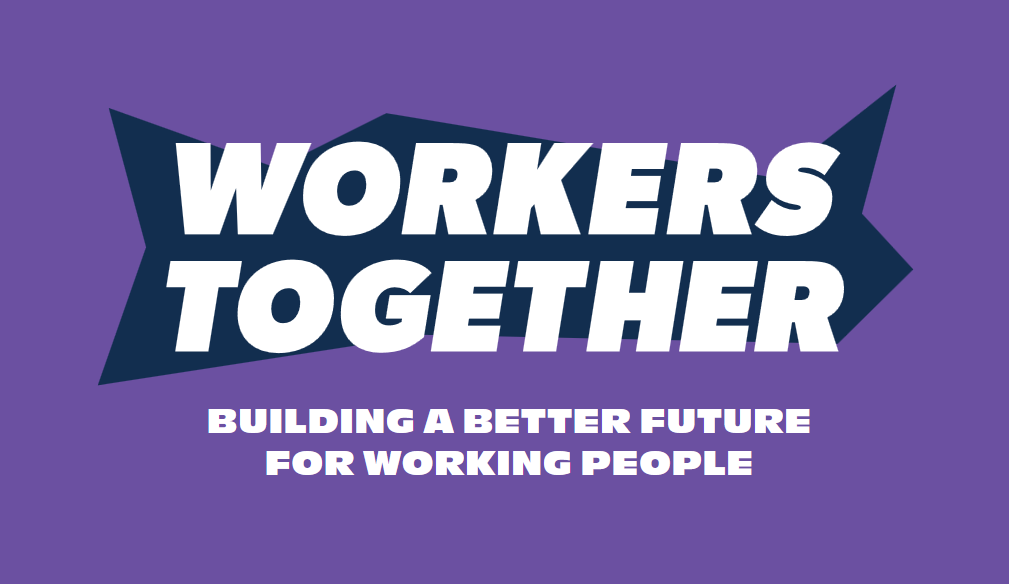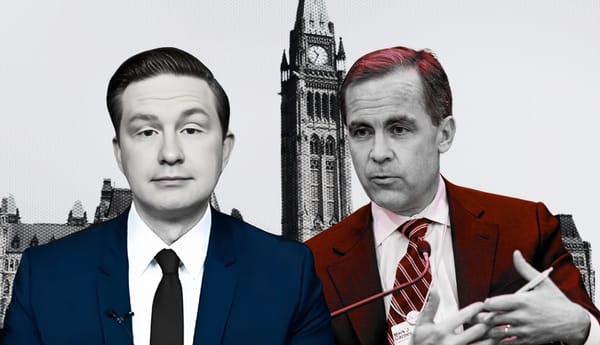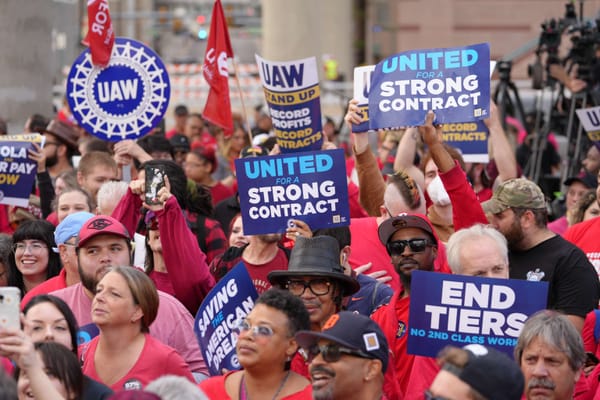On Tuesday, the federal government tabled its 2023 budget. As expected, the Liberals’ spending plan leaves much to be desired. While Budget 2023 represents some gains in the areas of healthcare and job creation, it’s a decidedly modest document, as concerned with political optics as it is with the overall direction of the country.
The budget’s proposed spending is meant to promote green investment, meet committed healthcare spending increases and address ongoing affordability issues related to post-pandemic inflation. On many of these measures, however, the budget falls far short. Indeed, spending on these important priorities is simultaneously framed within the government’s adherence to fiscal consolidation and deficit reduction. Because of this renewed commitment to spending restraint, as many unions are pointing out, this budget marks another “missed opportunity.”
Healthcare Wins and Losses
As expected, Budget 2023 contains a sizable portion of the new healthcare funding agreed to in recent negotiations with the provinces, some $46 billion of the $196 billion deal. The hallmark of new healthcare spending is the full rollout of the dental care spending program. Up to this point, payments have been made available to eligible families with children under 12. According to the budget, the plan thus far has allowed more than 240,000 children to access dental care. Budget 2023 now provides $13 billion over five years and then $4.4 billion ongoing to implement the Canada Dental Care Plan for families with annual incomes of less than $90,000.
Health transfer top-up payments to the provinces, along with tailored funding increases worked out in the recently announced bilateral agreements, will increase overall healthcare spending and the federal government’s contribution, a welcome development. However, fears remain about how the provinces will use this money, particularly in light of Ontario and some other provinces making it easier for for-profit providers to gain access to healthcare dollars.
Despite enhancements to healthcare spending, there is a glaring lack of attention in the budget to addressing the ongoing healthcare labour crisis. Without a national plan to ensure the provinces keep up their funding and don’t spend federal transfers on for-profit providers, agency staffing and other expensive, temporary measures, the long-term healthcare crisis will persist. There’s also mention of a national pharmacare plan.
Addressing ‘Affordability’?
The centrepiece of the budget’s chapter on “making life more affordable” is a commitment to continue for another six months the doubling of the GST rebate for low-income Canadians, now rebranded as a “grocery rebate” in response to continued food price inflation and the recent parliamentary testimony of Loblaw CEO Galen Weston. This enhanced tax rebate was originally introduced as the government’s primary mechanism for helping low-income families cope with the impacts of inflation. The Liberals have been at pains to emphasize the highly targeted nature of this intervention — getting money to those who need it most — to ward off criticisms from the right that additional spending in response to inflation is itself inflationary.
Budget 2023 reiterates this positioning. It notes that, “As the government continues to make targeted investments to support Canadians and grow the Canadian economy, it is important that governments remain mindful of not fuelling inflation.” Of course, rebating a small portion of sales tax revenue to the approximately 11 million lowest income earners was always a fairly tepid response to a truly grave cost-of-living crisis (the maximum top-up payment for a couple with two children is $467). The extension of this temporary measure will cost the government roughly $2.5 billion, a not insignificant sum. The extension of the GST rebate is therefore positive news. Yet much more could be done to aid those most impacted by price increases.
The budget of course also touts previous spending that the government argues has aided those most in need of relief. The national child care program has put six provinces on track to reach the average of $10 per day by June of this year, while the remaining provinces should meet this goal by 2026. Enhancements to the Canada Worker Benefit — a form of earned income tax credit — continue to provide some relief to the lowest-earning workers. As well, a previous 10 per cent increase to Old Age Security has given the elderly some respite from the harms of inflation.
To further address affordability, the budget proposes to increase access to “File My Return,” a new auto-tax filing service through the Canada Revenue Agency. The goal is to help two million low-income tax-filers by 2025. While a seemingly small reform, making tax filing easier for low-income Canadians ensures that those most in need get the benefits to which they are entitled. As Budget 2023 reports, roughly 12 per cent of Canadians don’t file their taxes, most of whom are low-income workers who end up missing out on vital income supports.
Beyond the above proposals, as well as some small improvements to federal student loans and grants, there is shockingly little to meet the needs of workers who have been squeezed by over a year of high inflation. All told, the net fiscal commitment of the measures designed to “make life more affordable” is roughly $5.2 billion over five years, which is in line with an approach that seeks cost-of-living solutions within the confines of spending restraint.
Keeping Up With The Jones
As expected, Budget 2023 is also a response to the United States President Joe Biden’s crown legislative achievement, the Inflation Reduction Act (IRA), which, despite its name, was largely centred on subsidies and tax credits for green infrastructure investment. There has been considerable fear from business and labour that the American legislation’s financial incentives would lure investment and jobs away from Canada. Biden’s recent visit to Parliament Hill only confirmed this. The IRA committed nearly 400 billion USD to green energy infrastructure, electric vehicle credits, mineral exploration and battery production. In response, the Liberals have prioritized their own version of “green industrial policy” through a series of initiatives to promote the growth of climate-friendly investment, committing roughly $80 billion over the next decade. The hodge-podge of tax credits, investment funds and other incentives contained in this budget total nearly $21 billion over five years.
Some progressive economists have celebrated the U.S. legislation as a major boost to climate investment, while others have criticized the IRA, particularly its emphasis on tax breaks and subsidies in lieu of direct public investment. Hadrian Mertins-Kirkwood at the National Observer raises similar concerns about the Liberal budget’s approach to green investment, which makes its commitment to the market over direct public investment quite explicit. The budget states: “The tax incentives and investment supports proposed in Budget 2023 are designed to set a framework for boosting overall investment, while leaving the private sector to determine how to invest based on market signals.” Rather than direct public investment, the budget largely uses the carrot of tax breaks to nudge the private sector in the right direction. This amounts to a huge gamble that, given the right incentive structure, profit-seeking corporations will invest in the clean energy infrastructure we need. But what if they don’t? This is hardly the urgent government intervention that the climate crisis necessitates.
As with the American legislation, another key question remains as to what extent this investment promotes the creation of good, union goods and involves labour in training programming for climate-friendly industries. Debates are ongoing south of the border concerning whether or not the IRA will ultimately meet these objectives. The Liberal budget, on the other hand, does seem to address the jobs issue directly. Several of the clean energy investment tax credits will only be available to businesses that pay prevailing wages and offer training and apprenticeship opportunities. Notably, the prevailing wage rules attached to these tax credits will be based on union rates, including benefit and pension contributions. Future consultations with labour unions and other stakeholders will determine the full scope of these requirements.
Spending And Cutting In A Sluggish Economy
In the days leading up to the government’s tabling of the budget, much commentary focused on the ‘trickiness’ of balancing calls for fiscal restraint amid a slowing economy against the need to address lingering affordability issues related to persistent inflation. The Bank of Canada’s interest rate hikes have worked their way through the economy and slowed economic growth and investment to a trickle, reducing projected tax revenue in the process.
Based on a survey of private sector economists, the budget projects a shallow recession in 2023, revising some of the government’s economic projections from the fiscal update in the fall of 2022. Real GDP growth is expected to decelerate from 3.4 per cent in 2022 to 0.3 per cent this year, and then rise again to a modest 1.5 per cent in 2024. This will likely push unemployment up above 6 per cent, softening the labour market and reducing workers’ bargaining power. The budget therefore projects a higher deficit of $40.1 billion rather than the $30.6 billion forecast last fall. Consequently, the budget also revises up the government’s debt-to-GDP ratio for 2023-24, though Canada’s debt remains modest compared to other G7 nations.
Despite a higher than originally forecasted deficit, the government remains on a course of fiscal tightening following the pandemic. As the document summarizes: “Moving forward, Budget 2023 will continue […] efforts to bring the pace and scale of the growth of government spending back to a pre-pandemic path, in order to ensure that Canadians’ tax dollars are being used efficiently […]” The government is therefore proposing several spending cuts and tax increases.
In a clear response to the recent scandal over public money paid to private consulting firms, the budget “proposes to reduce spending on consulting, other professional services, and travel by roughly 15 per cent of planned 2023-24 discretionary spending in these areas.” It further adds that, “This will result in savings of $7.1 billion over five years, starting in 2023-24, and $1.7 billion ongoing. The government will focus on targeting these reductions on professional services, particularly management consulting.” In total, Budget 2023 seeks $15.4 billion or roughly 3 per cent in savings through across-the-board cuts to government spending, which the government claims will not impact service delivery — an unlikely outcome.
Budget 2023 also plans to reform the Alternative Minimum Tax, a measure introduced in 1986 to ensure that wealthy Canadians who claim significant tax breaks still pay a minimum level of tax. That minimum tax rate will be moved up from 15 per cent to 20.5 per cent, alongside the introduction of some additional tools to crack down on tax avoidance. The budget also confirms that the previously announced tax on share buybacks will come into force on Jan. 1, 2024. Share buybacks are a scheme many large corporations use to boost their share price and reward executives with higher “performance-based” compensation. Depending on the rate at which it is set, a share buyback tax can serve as a revenue-generating mechanism or discourage the activity altogether, or both. Canada’s tax will be 2 per cent, a rate low enough that it’s unlikely to deter the practice, though it is projected to raise roughly $2.5 billion in government revenue over five years. Additional income tax amendments will go after dividends earned by financial institutions, which are currently not treated as business income.
A total of $53.8 million will also be allocated to Employment and Social Development Canada to ensure the “integrity” of COVID-19 income support benefits, (i.e., to help the agency recover “overpayments” to people who received more than the government now determines they should have or who were too poor to qualify for benefits). No mention is made of allocating any money to recovering Canada Emergency Wage Subsidy overpayments or addressing abuses of that employer support program. The budget’s proposed spending cuts and new tax measures are set to amount to $21.5 billion in funds over five years.
Budget Reactions, Real And Imagined
Combing through conservative reactions to the Liberal budget leaves one wondering if they’re reading the same document. Predictably, Pierre Poilievre and the Conservatives are fuming about the “spending bonanza” of another “inflationary budget.” Some apparently confused commentators are characterizing the spending plan as yet another drag on economic growth. On the other hand, Jagmeet Singh and the New Democratic Party, while unsatisfied with the budget overall, will support it, particularly since the government plans to fulfill two of its promises under the supply and confidence agreement: a full rollout of the dental care spending program and anti-scab legislation. Pharmacare, not so much.
According to the Canadian Union of Public Employees (CUPE), the budget represents “another win for the rich, and another tough loss for workers.” Union calls to keep the promise to introduce a national pharmacare program were unfortunately ignored. As CUPE further pointed out, the budget does almost nothing to meaningfully tackle corporate profiteering, widely recognized as a cause of inflation. The Public Service Alliance of Canada, which represents thousands of federal public servants, was especially critical of the planned spending cuts. Labour was also troubled by the government’s continued reluctance to introduce promised improvements to the Employment Insurance (EI) program. After dragging out prolonged stakeholder consultations, the government’s only new announcement related to EI in the 2023 budget is the extension of enhanced benefits for seasonal employees, providing workers in certain regions of the country with continued access to five additional weeks of benefits at a cost of $147 million over three years.
Canadians for Tax Fairness further highlighted the lack of new measures to raise taxes on the wealthiest — an area where the Biden Administration and Congressional Democrats have gone further. Also missing are meaningful measures to address housing affordability or invest in public transit. Largely in response to rising interest rates, new housing construction has flatlined, while urban transit systems have remained financially stretched. Without government aid, meeting Canada’s growing housing crisis and expanding public transit will be next to impossible.
Overall, as the Canadian labour movement seems to recognize, this budget, while making a few important gains, is another huge missed opportunity. It’s a document claiming to do more than it actually will. Although it sets out previously promised money to improve healthcare, it nevertheless falls far short of funding the support that Canadian workers need. While committing considerable funds to encourage climate investment, it puts the private sector in the driver’s seat. Workers deserve better.







